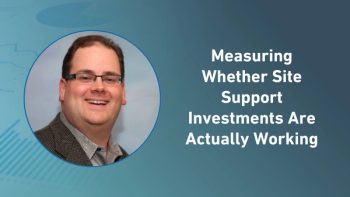
DEI & Clinical Trials: Navigating Policy Shifts
This explainer unpacks how recent US policy shifts are reshaping diversity, equity, and inclusion in clinical research, exploring the ripple effects on patients, sites, sponsors, and investigators.
This presentation was generated based on two articles written by Rebecca Johnson, PhD:
Today, we're diving into how recent US policy shifts are impacting diversity, equity and inclusion in the world of clinical research. We'll be drawing from analysis by Rebecca Johnson, PhD, in Applied Clinical Trials to really unpack the consequences for the entire research ecosystem, and most importantly, what this all means for you if you're a clinical operations professional.
So what's the central question here? It's really this, ‘How are these new US policies actively reshaping the landscape of clinical research?’ Let's get into the challenges they're creating, and the strategic pivots that are now required to navigate this new environment.
To understand what's happening now, we have to start with the policies themselves. The analysis really points to a series of executive orders that specifically target diversity, equity and inclusion programs inside the federal government. Now, while these orders might be framed as just government workforce reforms, their reach is actually much, much broader. They extend out to federal contractors and grantees too, and what that does is create this climate of uncertainty that hits sponsors, sites, and partners all across the research ecosystem, many of whom have invested a ton in inclusive recruitment strategies, and this is where that abstract policy becomes very, very real. The administration's actions have effectively created a list of flagged terms. This is now raising some critical questions for researchers about which initiatives, and frankly, even which words are still considered okay to use in their work.
So of course, these policy shifts don't happen in a vacuum. They create a pretty significant ripple effect that has real, tangible consequences for pretty much every single stakeholder involved in a clinical trial. Let's start with patients. For them, the biggest concern is really an erosion of trust. It's taken years of hard work to build long term relationships with communities that have historically faced barriers to research. The fear now is that these rollbacks could be seen as a sign that their specific health needs are being pushed to the side. This quote here from Paul Evans, the CEO of Velocity Clinical Research, absolutely nails the core risk. If participants start to feel unwelcome, it could seriously damage the entire community's trust and their willingness to even engage with research, which, as you know, is the very bedrock of this whole enterprise.
Now for providers and academic researchers, the risk is more systemic. We're talking about cuts to grant funding, especially those indirect costs that support the basic research infrastructure. This threatens to weaken the entire pipeline, and that means fewer opportunities to train the next generation of investigators, especially those from underrepresented backgrounds. And you see a very similar challenge facing research sites. You know that grant funding is often what supports diverse staffing and community outreach, and since the diversity of patients at a site often mirrors the diversity of its staff. Losing those resources is a direct hit to inclusive enrollment. They are absolutely critical.
And finally, you have sponsors and payers, and they're caught in this really tough balancing act. On one hand, sponsors know that having representative data is essential for getting regulatory approval and for market adoption, but at the same time, payers, while they're still focused on data that reflects the disease burden, might start scaling back on those broader equity programs, which could end up limiting trial access for patients.
So with all this focus on top-down policy, it really begs the question, ‘Are government mandates the only driver of progress in this space, or even the main one?’ And that question brings us to this really compelling counter argument from Johnson's analysis, which is called the Mandate Myth. The core idea here is that these top-down requirements aren't the whole story. Actually, significant gains in inclusivity started happening long before the 2022 law that required formal diversity action plans. There was already this whole history of voluntary action that was pushing the field forward. We saw initiatives from the FDA itself, really powerful work, from patient advocacy groups, new requirements, from influential journalism and even proactive sponsor led diversity goals. The momentum was already building. And you can see the results of these voluntary efforts in the numbers by 2020, and remember, this is before those major mandates were in place. White enrollment in US trials had already dipped below 75% and we saw notable increases in participation from other key groups.
But, and this is a really important ‘but,’ the work is far from over. Despite all that progress, the analysis clearly shows that significant, persistent gaps in representation are still there for several key populations, and this really just underscores the limits of mandates. Take the NIH they've had an inclusion policy on the books since 1993, yet studies show that many investigators still don't set specific recruitment goals or provide cultural competency training. So it's pretty clear that compliance on paper doesn't always translate to success in practice.
So if mandates aren't the whole answer, what is the path forward for clinical operations professionals? Well, the key insight here is that real, lasting progress seems to depend less on shifting policy and more on intentional, accountable planning that is baked right into the trial operations themselves. The analysis gives us a really clear operational framework for this. It starts with reframing the whole conversation around comprehensive representation grounded in the science of disease epidemiology. It means revising training to really emphasize cross cultural communication and the history of informed consent. It's about fostering transparency and clearly communicating the value of every single participant's contribution, and it involves developing new metrics that incorporate social determinants of health and leveraging tech like AI to support site and participant selection. The main goal is to treat these diversity plans as core strategic guides, not just another compliance document to check off a list, because ultimately, when you strip everything else away, it all comes back to this one fundamental, unchanging driver. Regardless of the political terminology of the day, the scientific reason for inclusive research is absolute. The variability of how drugs work across diverse populations must be studied to make sure a new medicine is safe and effective for every single person who might need it.
That leaves us with this final thought to chew on. While the policy wins might be shifting and the landscape may get complicated, the scientific and operational imperative to conduct representative research that's constant for operations professionals, the challenge, and really the opportunity, is to keep that momentum going through accountability and careful planning, making sure that inclusivity stays core to trial quality, no matter what the political climate looks like.
Newsletter
Stay current in clinical research with Applied Clinical Trials, providing expert insights, regulatory updates, and practical strategies for successful clinical trial design and execution.




